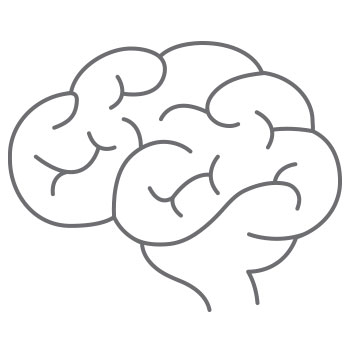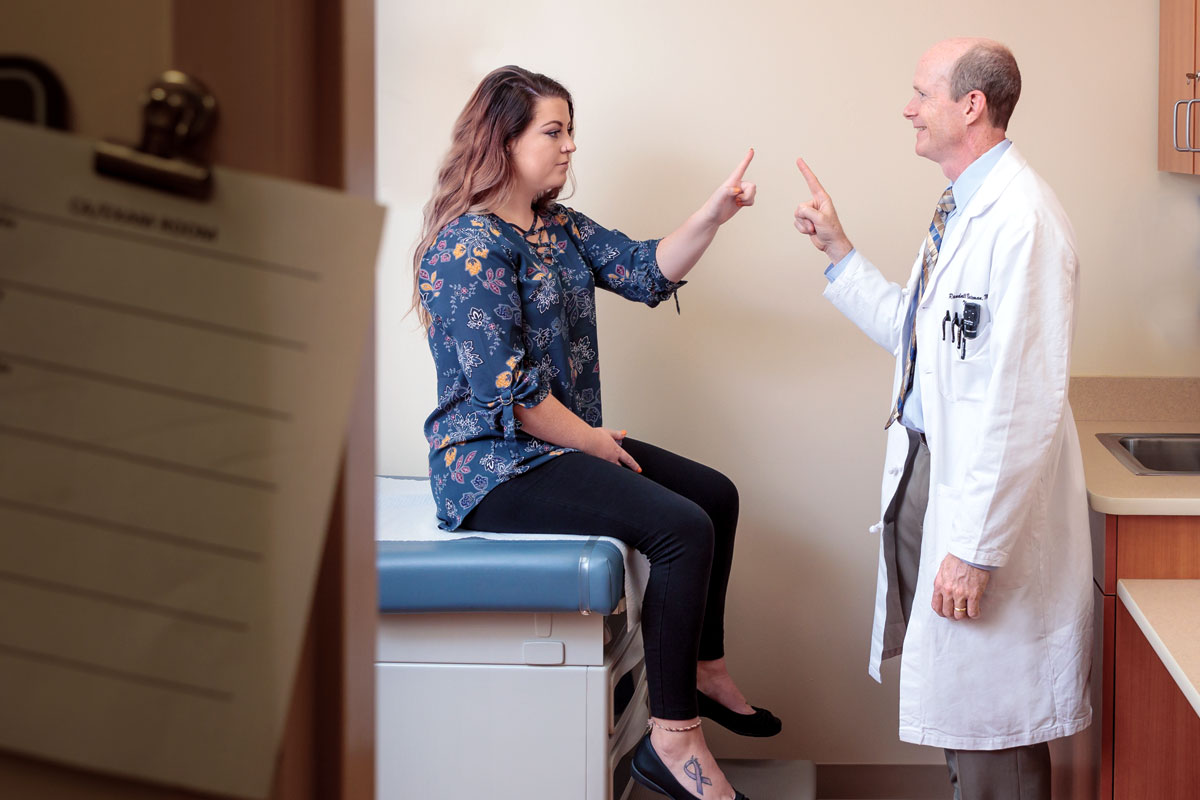
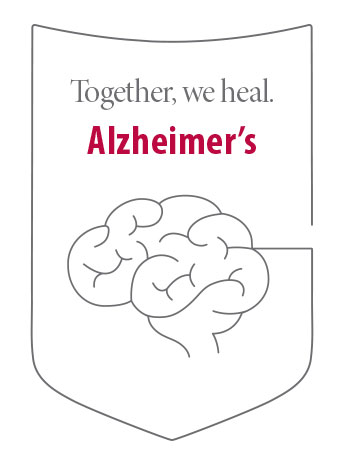
Caring for an aging relative with Alzheimer’s disease, watching memories slowly slip away, is an exhausting and heartbreaking ordeal. For those with the condition, modern medicine can offer little in the way of treatment as the disease inexorably strips away their ability to recognize and understand the world around them.
Finding solutions can’t happen soon enough. The American population is rapidly graying, and the risk of developing the disease rises with advancing age. The Alzheimer’s Association predicts that 16 million Americans will be living with the disease by 2050.
A large, dedicated team at Washington University School of Medicine has been working for 40 years to brighten this bleak outlook, and the investigators may be on the cusp of succeeding. They have traced the natural history of the disease, studied the molecular and cellular changes that occur in the brain, designed and tested investigational drugs aimed at slowing or stopping the disease, and developed imaging techniques to detect toxic proteins in the brain. Now, they are on the brink of finding ways to predict who will get the disease and when; they may even determine how to prevent it entirely.
An Alzheimer’s-free future has never looked more likely.
Step one: diagnosis
The first sign is usually forgetfulness — a forgotten conversation, a misplaced item, a question asked and answered and asked again. Until a few decades ago, such lapses might have been chalked up to the normal effects of aging. But Leonard Berg, MD, a professor of neurology at Washington University, was concerned that the distinction between normal aging and dementia was poorly understood, so in 1972 he started a faculty lunch group to discuss how to distinguish the two processes.
“At the time, there was no standard method to distinguish normal aging from very mild dementia,” said John C. Morris, MD, the Harvey A. and Dorismae Hacker Friedman Distinguished Professor of Neurology and professor of pathology and immunology. “So Leonard and his colleagues developed a clinical tool to diagnose dementia and to determine its severity.”
That tool, the Clinical Dementia Rating Scale, later revised by Morris, is now used worldwide to identify people with dementia. Berg died in 2007; but the work he started has since grown into Washington University’s Charles F. and Joanne Knight Alzheimer’s Disease Research Center (Knight ADRC), a network, directed by Morris, of faculty members, trainees and staff dedicated to understanding, treating and preventing the No. 1 cause of cognitive decline in older people.
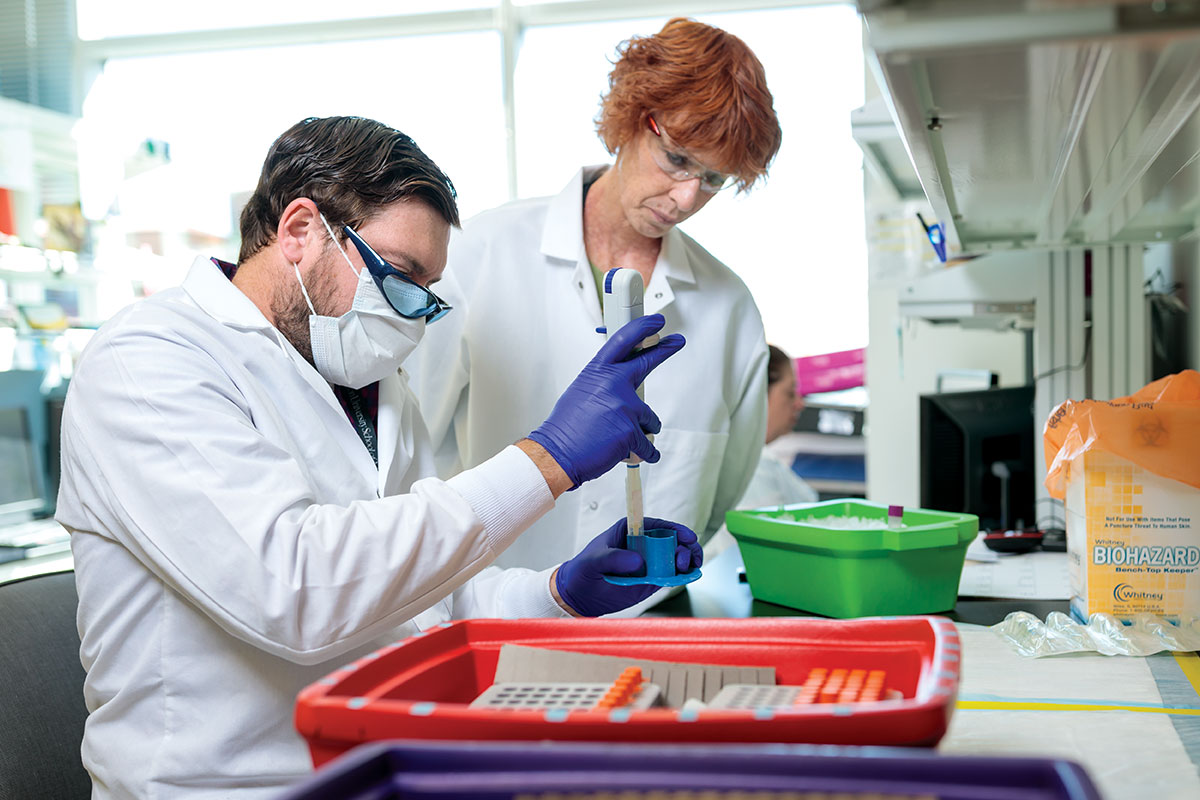
Today, we know that memory lapses could be caused by many things: lack of sleep, medications, vitamin deficiencies, brain tumors or neurological diseases other than Alzheimer’s, such as Parkinson’s disease or frontotemporal dementia.
“When people come in and they’re clearly impaired but we don’t know what the cause is, that’s when biomarkers can be really useful,” said Anne Fagan, PhD, a professor of neurology and head of the biomarker research unit at the Knight ADRC. Biomarkers are proteins or other biomolecules that indicate the presence of disease.
Research by Fagan and others has established that two proteins linked to Alzheimer’s disease — amyloid beta and tau — can be detected in the cerebrospinal fluid that bathes the brain and spinal cord. Neurologists can resolve a difficult diagnosis by taking a spinal tap and measuring levels of the two proteins.
“I use the results of these biomarker tests to inform the care of my patients,” said Gregory S. Day, MD, an assistant professor of neurology. “A few decades ago, Alzheimer’s was formally diagnosed only on autopsy. Now using biomarkers or imaging, we can tell people what is going on very early in the process.”
Stopping the disease in its tracks
Early detection allows physicians to discuss lifestyle modifications and financial arrangements with patients. It does not, however, allow them to offer any medications to slow or stop the disease. The Food and Drug Administration has not yet approved any such drugs.

David M. Holtzman, MD, the Andrew B. and Gretchen P. Jones Professor, head of the Department of Neurology and professor of developmental biology, is trying to change that. He studies the basic biology underlying Alzheimer’s disease — how amyloid beta and tau build up in the brain, why clumps of such proteins cause brain cells to die, and how drugs can be designed to interrupt the process. The research of Holtzman and colleagues at Eli Lilly and Company led to the development of solanezumab, a drug designed to counter amyloid beta’s toxic effects. Solanezumab and another drug, gantenerumab, are now being evaluated in the first-ever Alzheimer’s disease prevention trial, at the School of Medicine and elsewhere.
Other drugs — targeting amyloid beta or tau — also are being tested, and researchers are hopeful that some will prove effective.
In the past, drug trials were complicated by a lack of accurate disease detection methods.
Then in the early 2000s, Tammie L.S. Benzinger, MD, PhD, the Knight ADRC’s director of imaging studies, and others pioneered the use of positron emission tomography (PET) brain scans targeted against amyloid beta as a tool for detecting Alzheimer’s.
“When people started using amyloid PET to assess trial participants, they discovered that only about 80 percent of the participants actually had Alzheimer’s,” said Benzinger, a professor of radiology and of neurological surgery. “If you treat someone whose dementia is not related to amyloid with an amyloid drug, of course it’s not going to work.”
“Researchers here are pursuing treatments that could one day dramatically improve the lives of millions of individuals worldwide. We want to do our part to fulfill that goal.”
— the late Charles F. Knight, former Trustee
Now, clinical trials routinely screen for misdiagnosed participants using amyloid PET scans or biomarker analysis.
In addition, researchers are expanding the basic science foundation upon which drug development rests. But much of what we know about Alzheimer’s disease has been learned from studying only one part of the American population.
“There is a lot of mistrust in the African-American community because of a history of medical exploitation,” said Myrtis E. Spencer, who leads the Knight ADRC’s African-American outreach program. “But they are twice as likely to get the disease compared with non-Hispanic whites. We don’t know why. We don’t have the full scientific picture because research historically hasn’t been inclusive.”

Through the efforts of Spencer, Morris and others, African-American participation in Alzheimer’s studies at the School of Medicine has risen to 18 percent, comparable with the African-American population in the St. Louis area and significantly higher than the national average for Alzheimer’s studies.
“We’ve found that the concentration of tau protein is significantly lower in African-Americans than in non-Hispanic whites,” Morris said. “What does that mean in terms of the pathology of the disease? I don’t know. But I do know it means that we can’t just take everybody and lump them together. The disease may develop and progress differently in different populations. We are not going to find treatments that work for all people if we don’t understand how the disease behaves in all people.”
Detecting the silent phase
Although treatment is important for the estimated 5 million Americans already living with Alzheimer’s, it won’t lead to a future free of Alzheimer’s. By the time people show up in doctors’ offices complaining of forgetfulness, their brains already have begun to atrophy. And while some of the drugs currently in trials may be able to prevent more brain cells from dying, nothing will bring back the cells already lost.
To truly stop Alzheimer’s, doctors must catch people heading down the path to Alzheimer’s dementia and redirect them, much as physicians today measure blood cholesterol levels and, if necessary, prescribe cholesterol-lowering drugs to avert a heart attack.
Since the early 1990s, Washington University researchers have been collecting evidence that memory loss and confusion show up very late in the game, after years of toxic protein accumulation in the brain and corresponding tissue damage. Two major studies led by Washington University have used imaging and biomarker analysis to trace the natural history of the disease: the Adult Children Study, which follows people with at least one parent diagnosed with Alzheimer’s, and the Dominantly Inherited Alzheimer Network (DIAN), which studies people genetically predisposed to develop the disease at a young age. These two studies, and others conducted at Washington University and elsewhere, have allowed researchers to develop a rough timeline of what happens in the brain in the years before symptoms appear: Amyloid plaques appear first, then tau tangles, followed by brain atrophy.
“This silent phase may last two decades, which gives us a chance to intervene,” Morris said.
“One day, Alzheimer’s disease will be treatable or even preventable. Researchers at Washington University are leading the way to making that bright future real.”
— David C. Farrell, Trustee Emeritus
Spinal taps and PET scans can reliably detect signs of disease before dementia, but neither is ideal for widespread screening. A single PET scan costs approximately $5,000 and requires equipment and expertise difficult to find outside of research settings. Spinal taps have an undeserved reputation for being painful and dangerous, so some patients are reluctant to undergo the procedures.
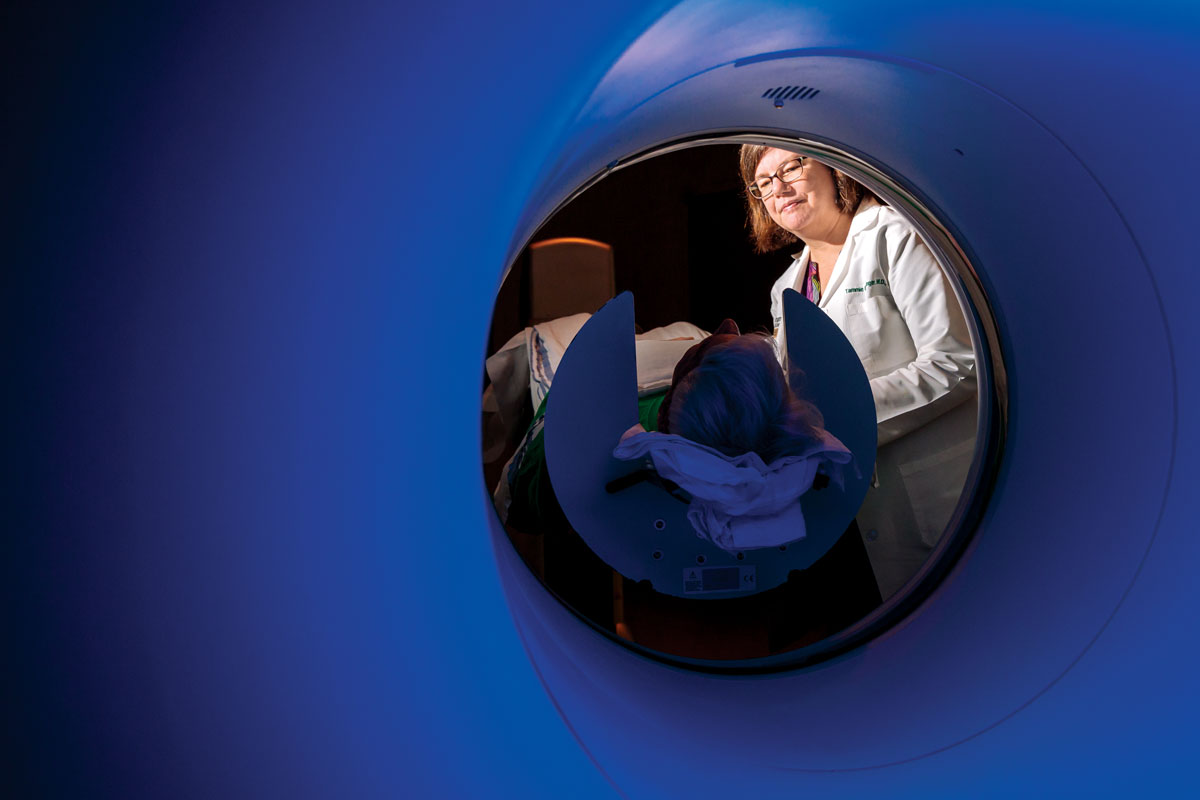
MRI scans, though, are already a routine part of neurological care, available in most clinics. Benzinger and colleagues have shown that a characteristic pattern of brain atrophy is visible in an MRI scan before symptoms appear. They are developing an MRI scan to diagnose Alzheimer’s in its pre-symptomatic phase.
A blood test is also on the horizon. “Last year my lab reported the first highly specific blood test for amyloid,” said Randall J. Bateman, MD, the Charles F. and Joanne Knight Distinguished Professor of Neurology. “Since then, other groups have replicated and expanded on it. I think we’ll see that test in use in doctors’ offices in the next three to five years.”
Rajendra S. Apte, MD, PhD, the Paul A. Cibis Distinguished Professor of Ophthalmology and Visual Sciences, and Gregory P. Van Stavern, MD, a professor of ophthalmology and visual sciences, recently have reported a small study that suggests that signs of Alzheimer’s might be detectable through a specialized, noninvasive eye exam.
No longer inevitable
But finding people on the path to dementia is only half the battle. We also need to find a way to get them off the path.
Bateman directs the DIAN Trials Unit (DIAN-TU), an international clinical trial designed to find drugs that prevent Alzheimer’s dementia. The trial involves people from DIAN families; family members who inherit a faulty gene variant are all but guaranteed to develop Alzheimer’s dementia at about the same age their parent did, typically in their 50s, 40s or even 30s. Participants enroll in the trial while their minds are still sharp but their brains show some amyloid accumulation. Two drugs are being tested — the trial of a third was stopped due to safety issues — to determine whether they can slow amyloid plaque buildup. The final report is due out in a year.
Although DIAN-TU involves people with rare mutations, treatments that are successful in this population could also help people with the more common forms of the disease, which strike older adults. It is thought that the destructive processes in the brain are much the same for both types of the disease.
Other prevention trials involving people with genetic forms of Alzheimer’s are in the works. A few prevention trials are underway in people without genetic forms of the disease, and more could be launched once screening tests are more fully developed. There are plenty of experimental drugs to try.
Shakespeare lamented the coming of the “second childishness.” We may be able to elude it.
More from the Leading Together campaign
Published in the Winter 2018-19 issue



